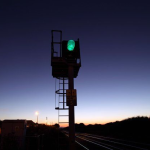
Regular expression processors are being deployed to provide deep packet inspection at line rates.
Internet security threats continue to evolve. Cyber warfare can now be added to hacking and organised crime – stealing information for competitive advantage.
Estonia suffered large scale distributed denial of service (DDoS) attacks in April and May 2007, whereby government, banking, telecom companies and media websites were deliberately overloaded with traffic. Such attacks could have disastrous effects on a large market economy. According to BT, 90% of all UK financial transactions transit its network.
To detect such attacks, service providers monitor traffic and compare it to a collected traffic history. If the traffic’s characteristics differ sufficiently from the norm, it is routed to equipment that filters the malicious traffic. The mitigation device must inspect packets carefully to identify if they are malicious since not all abnormal traffic patterns are threats. For example, network traffic will surge at the start of a soccer match or when a network failure causes traffic to be rerouted.
Cyber security is one reason for a growing interest among equipment makers and chip vendors in packet inspection at line rates.
Every which way

The latest techniques in data conversion are leading designers to a whole new world of opportunity.
Just like the old song, the road of data conversion is long with many a winding turn. As to where it leads … Well, for high performance architectures, the choice of data converter comprises three main categories: successive approximation register (SAR); sigma delta (SD); and pipeline.
Each represents a different trade off between speed, resolution, power consumption and cost. Pipeline converters keep the speed freaks happy, whereas in direct contrast, delta sigma converters offer slow, steady and precise measurements and are therefore suitable for high resolution applications. SAR, meanwhile, is a proverbial ‘Jack of all trades’, straddling the middle ground between pipeline and delta sigma converters in terms of speed and accuracy.
However, there’s now a revelation in data conversion – continuous time sigma delta (CTSD). Major process changes have helped to put this technology at the forefront of industry applications like medical imaging.
CTSD technology has been the subject of university and industry research for more than 15 years but, with the launch of its first eight channel, 12bit, 50Msample/s CTSD a/d converter, National Semiconductor claims to be the first manufacturer to successfully transition CTSD technology from the research lab to the production line.


